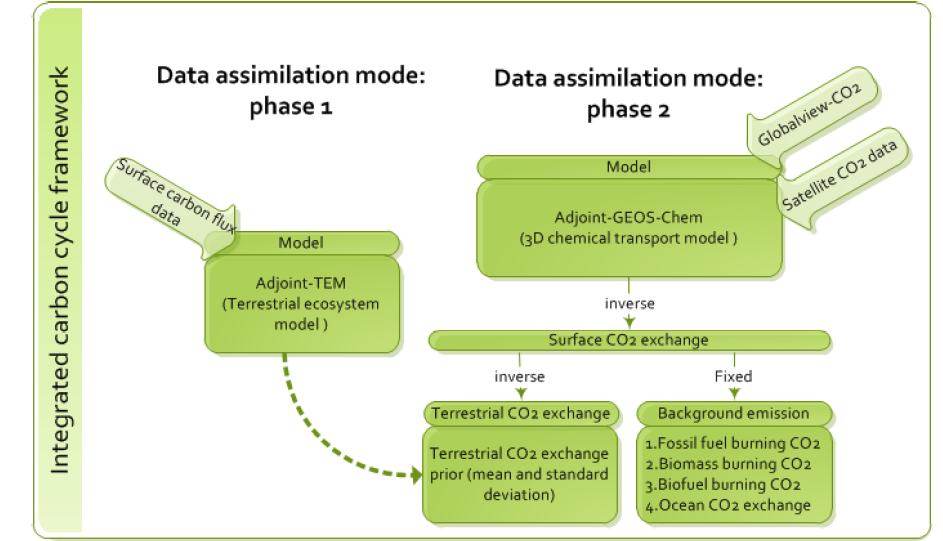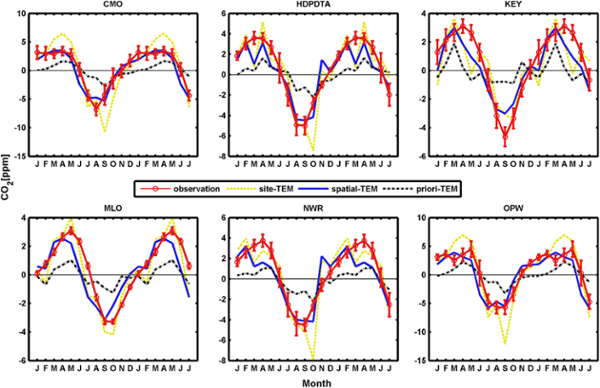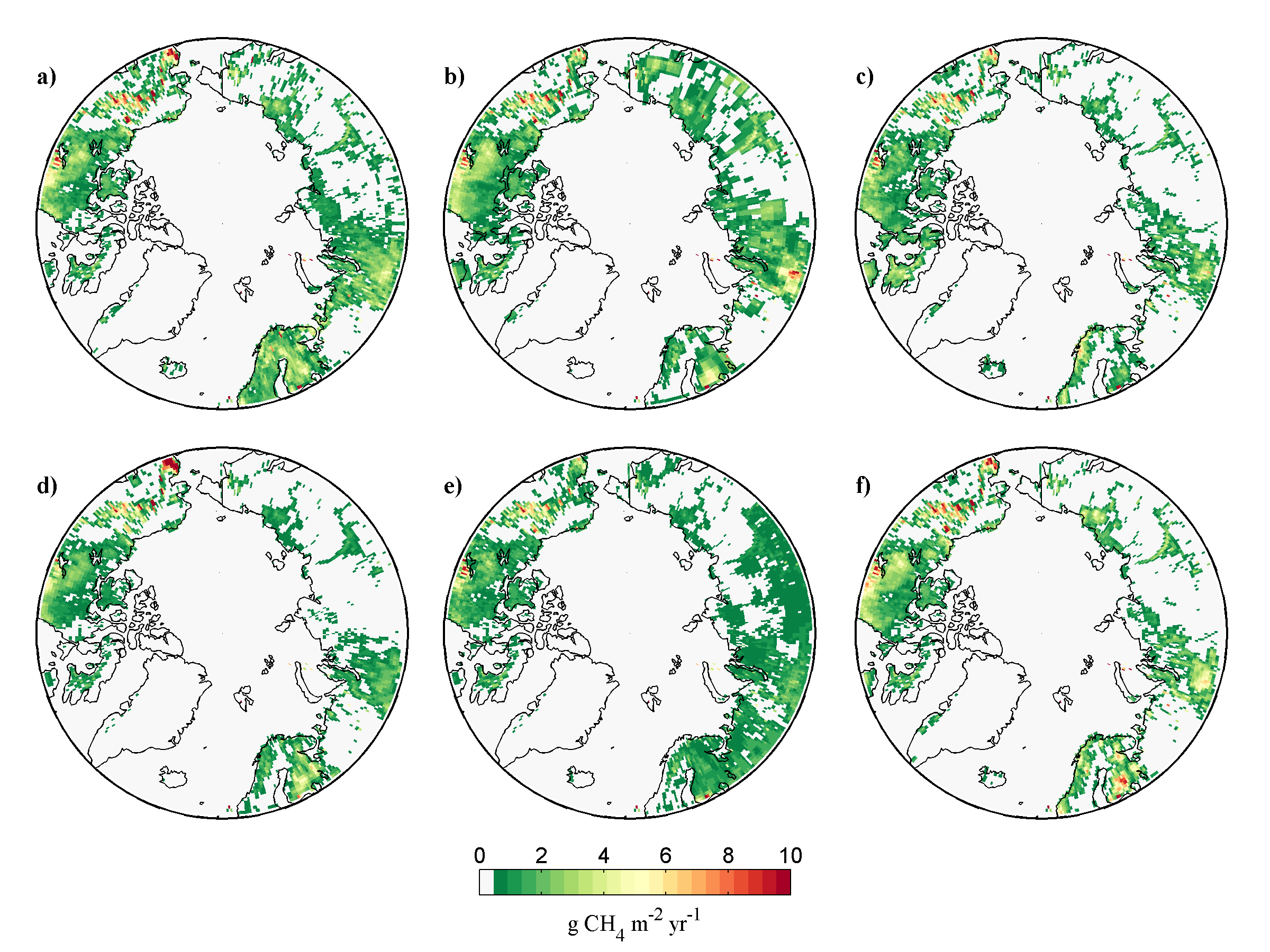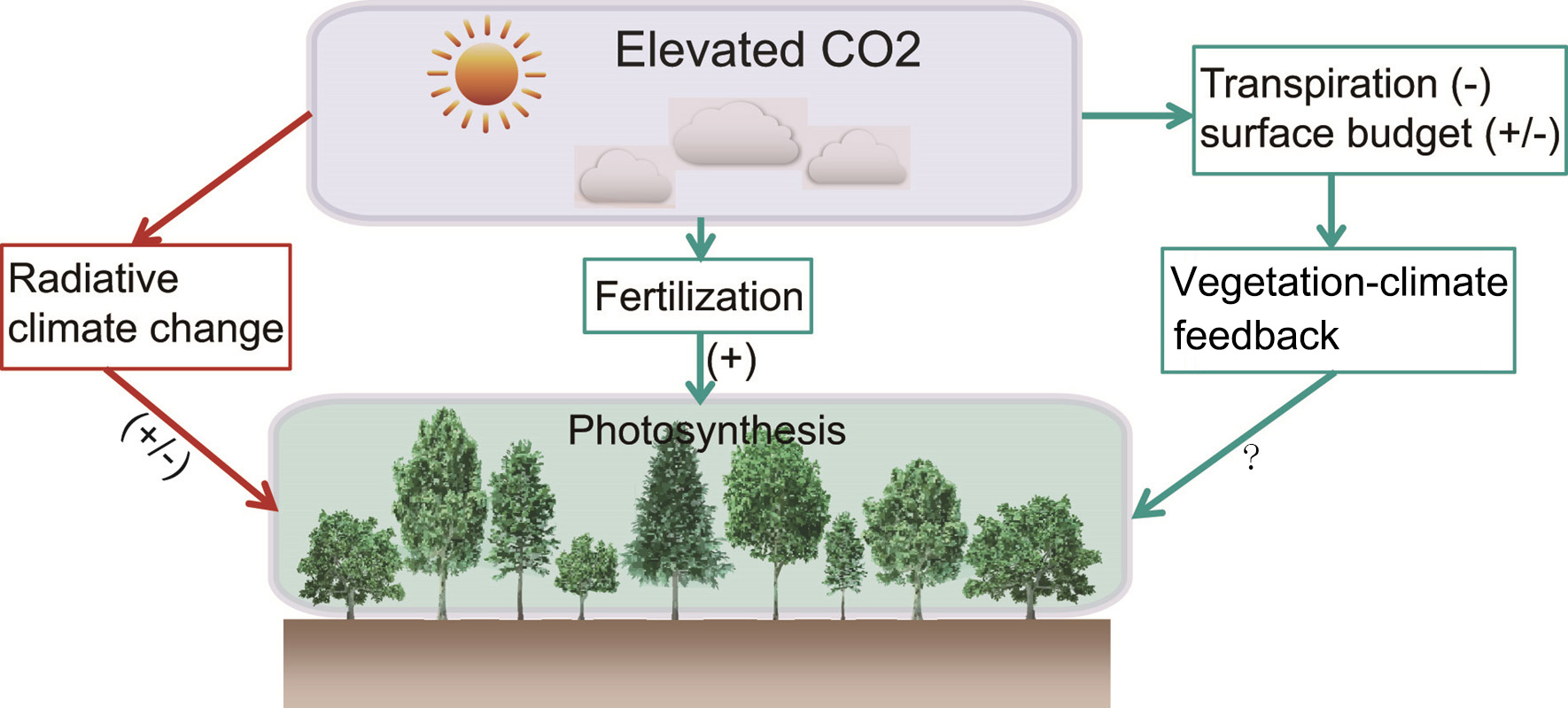Atmospheric Climate and Chemistry Models
GEOS-Chem Model
The GEOS-chem model is a global 3-D model of atmospheric composition driven by assimilated meteorological observations from the Goddard Earth Observing System (GEOS) of the NASA Global Modeling and Assimilation Office. It is applied by research groups around the world to a wide range of atmospheric composition problems, including future climates and planetary atmospheres using general circulation model meteorology to drive the model. Central management and support of the model is provided by the Atmospheric Chemistry Modeling Group at Harvard University. See web below to get more information: http://acmg.seas.harvard.edu/.


Figure.1 Seasonal trends of surface CO2 concentrations (ppm) at six GLOBALVIEW-CO2 observation stations. The GEOS-Chem CO2 simulation results driven by NEP estimated with spatial-TEM (blue solid), site-TEM (yellow dash) and priori-TEM (grey dash) are compared with observations (red solid line with error bar). The error bars show the standard deviations for the observation data (Zhu and Zhuang, 2013).

Figure 4. Optimized pan-Arctic CH4 fluxes in 2005 at 1/2◦ ×2/3◦ resolution using both SCIAMACHY and NOAA/ESRL observations. (a) BERN; (b) CLM4Me; (c) DLEM; (d) ORCHIDEE; (e) SDGVM; (f) WSL (Tan et al., 2016).
CESM

Figure 1. CESM is a fully-coupled, community, global climate model that provides state-of-the-art computer simulations of the Earth's past, present, and future climate states. CESM is sponsored by the National Science Foundation (NSF) and the U.S. Department of Energy (DOE). Administration of the CESM is maintained by the Climate and Global Dynamics Laboratory (CGD) at the National Center for Atmospheric Research (NCAR). Our recent study used the CESM to explore the direct and indirect impacts of increasing atmospheric CO2 on global terrestrial ecosystem production (Zhu et al., 2017).